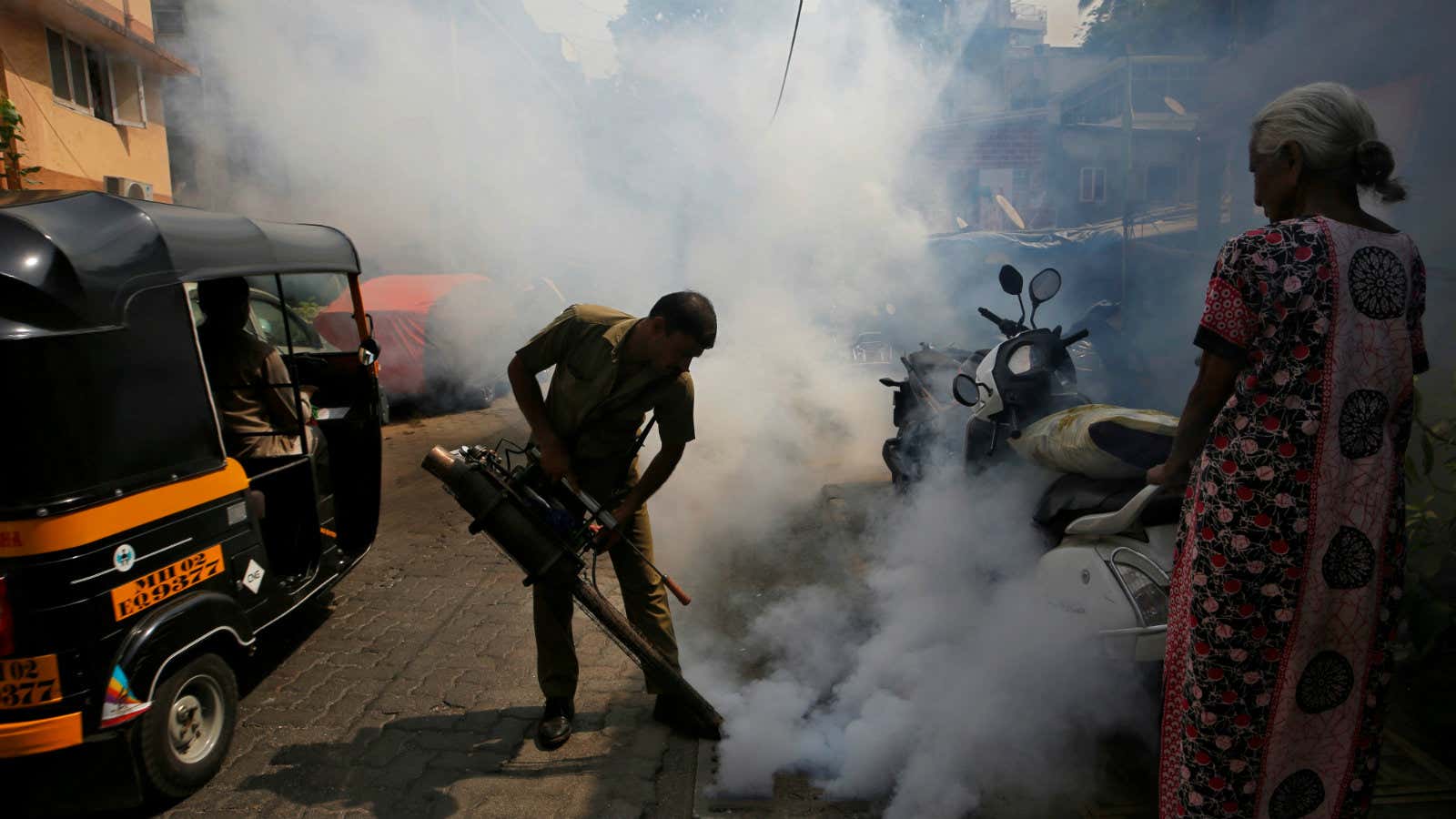As average temperatures rise in India, so does the risk of frequent and large-scale chikungunya cases spreading in the country, says a new study.
Chikungunya, a viral disease spread by mosquitoes, destroys white blood cells, compromises immunity, and aggravates existing medical conditions such as diabetes, heart disease, and high blood pressure. Symptoms of the disease—which can sometimes prove fatal if left untreated—include high fever and crippling arthritic joint pain.
Typically occurring in Africa and Asia, outbreaks have been reported in Europe and the Americas since 2000.
According to the study, due to be published in January 2019 in the journal Science of the Total Environment, transmission of chikungunya can happen between 20-34 degrees Celsius but peaks at around 29 degrees. But transmission stops when temperatures fall below 17 degrees Celsius or rise above 34 degrees.
“Having analysed datasets for 68 years (1948-2016), we found that compared to the 1948-1981 period, chikungunya cases have been reported more frequently, particularly from the eastern and western parts of the country during 1982-2016 when there was a steady rise in average temperatures,” says the study’s lead author Srinivasa Rao Mutheneni, scientist at the CSIR-Indian Institute of Chemical Technology, Hyderabad.
Kantha Rao Bhimala, a co-author of the study and climate modelling scientist at the Centre for Mathematical Modelling and Computer Simulation, Bengaluru, says that during 1948-1981, average temperatures remained at 26.5-27.2 degrees Celsius when chikungunya cases were seldom reported.
During 1982-2016, when average temperatures had risen to just under 29 degrees Celsius, chikungunya cases began to spike. “At those temperatures, the Aedes aegypti and Ae. albopictus species of mosquito, the main carriers, showed higher biting rate, low extrinsic incubation period, low mortality rate, and higher reproduction rate,” Mutheneni says.
Epidemiologically, a total of 383,260 chikungunya cases were reported during 2006-2016, with the highest incidence rate (84.6 per million population) reported in 2008.
The researchers say that the eastern and western coastal states of India showed higher mosquito breeding rates as compared to the central, northern, and northeastern parts of the country.
The reproduction rate rose during the higher temperatures following the monsoon period. “During the monsoon period, rainfall creates breeding habitats and higher temperatures help to complete the life cycle faster in both vector and pathogen,” Bhimala says.
According to the director-general of the India Meteorological Department, Kanduri Jayaram Ramesh, the country’s mean temperatures are gradually rising and a small variation in climatic factors can have a huge impact on mosquito-borne diseases like malaria, zika, dengue and chikungunya. “This demands constant monitoring of temperatures by health authorities,” Ramesh says.
Baridalyne Nongkynrih, professor, Centre for Community Medicine, All India Institute of Medical Sciences, New Delhi, says that since no effective vaccine or specific treatment is available for Chikungunya, controlling the vector remains the most effective method of preventing the disease.
“An integrated vector management approach consisting of, among others, continuous entomological surveillance during non-transmission period and interventions to decrease vector density can significantly help control chikungunya and other mosquito-borne diseases including dengue and Zika,” Nongkynrih says.
This piece was produced by SciDev.Net’s Asia & Pacific desk, and was originally published on SciDev.Net: news, views, and information about science, technology, and development, under a CC BY 2.0 licence. We welcome your comments at ideas.india@qz.com.
